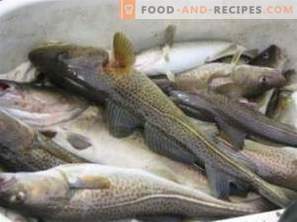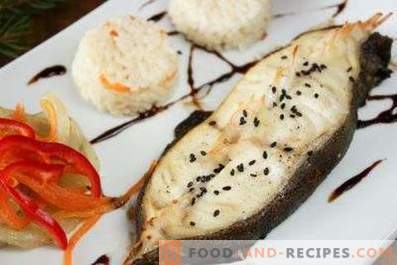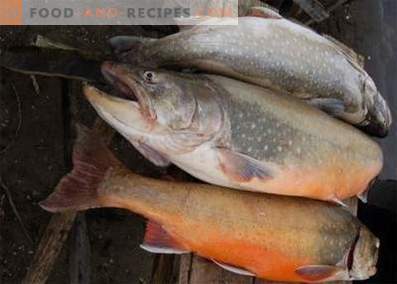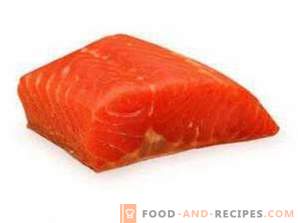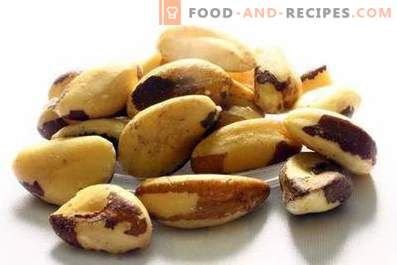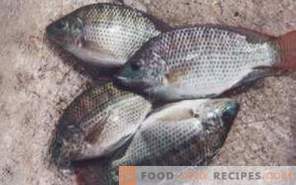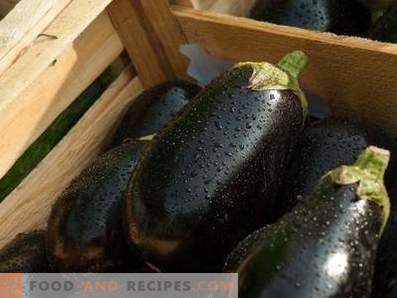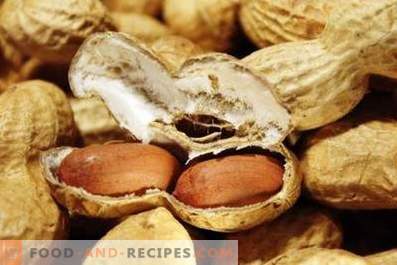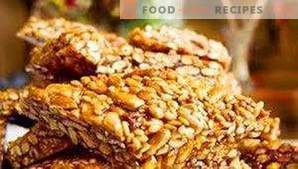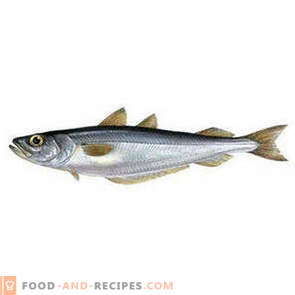
Blue whiting - pelagic fish of the cod family living in the water column over the depths of the Pacific and Atlantic Ocean. All members of the genus have a low elongated body with two anal and three dorsal fins, a pointed snout with a lower jaw protruding forward. The sides of these fish are silvery, the backs are bluish-gray or greenish, and the abdomens are practically white.
The genus to the blue whiting includes two similar species: the northern and the southern. Representatives of the first of them rarely reach a length of 350 mm and almost never gain more than 700 g in weight. Southern whiting is much larger than the northern ones: adults can weigh more than 1300 g with a body length of 500-550 mm. The described species for many years are valuable objects of commercial fishing.
In the sale of blue whiting comes in frozen form or in the form of semi-finished products. This fish tastes vaguely like a hake. Whiting is fried, dried, dried and boiled, used to make cutlets, canned food and fillings for fish cakes.
Nutrition value of whiting and vitamins in its composition
Nutritional value 100 g whiting:
- 18, 454 g of proteins;
- 0, 874 g of fat;
- 79, 109 g of water;
- 59, 887 mg of cholesterol;
- 0, 227 g of omega-3 fatty acids;
- 0, 068 g of omega-6 fatty acids;
- 1, 359 g of ash.
Vitamins per whiting (100 g):
- 39, 871 μg of retinol equivalent (A);
- 0, 039 mg of thiamine (B1);
- 0, 388 mg of tocopherol equivalent (E);
- 1, 366 mg of ascorbic acid (C);
- 5, 597 mg of niacin equivalent (PP);
- 0, 094 mg of riboflavin (B2).
Calories but putass
The energy value of 100 g of raw blue whiting is 81, 244 kcal. Dishes prepared on its basis, have the following calories:
- fried whiting - 151, 099 kcal;
- patties of whiting - 114, 471 kcal;
- ear of whiting - 31, 006 kcal;
- dried whiting - 257, 002 kcal;
- dried whiting - 202, 661 kcal.
Useful elements in the whiting
Trace elements per 100 g of fish:
- 0 696 mg of iron;
- 699, 578 μg of fluorine;
- 149, 884 μg of copper;
- 134, 446 mcg of iodine;
- 3, 991 μg of molybdenum;
- 54, 877 mcg of chromium;
- 29, 164 mcg cobalt;
- 8, 144 μg of nickel;
- 1, 018 mg of zinc;
- 0, 079 mg of manganese.
Macroelements per 100 g of fish:
- 334, 442 mg of potassium;
- 64, 788 mg of sodium;
- 209, 477 mg of phosphorus;
- 39, 717 mg of calcium;
- 189, 662 mg of sulfur;
- 164, 339 mg of chlorine;
- 39, 808 mg of magnesium.
Useful properties of the blue whiting
- Whiting is a low-fat fish with low energy value. People seeking to get rid of excess weight, can safely include it in their diet menu.
- Blue whiting contains more than 18% animal protein, having an optimal amino acid structure. That is why athletes and workers engaged in physical labor, can use dishes prepared on its basis, as an additional source of protein.
- Retinol, other vitamins and useful minerals contained in whiting, have a positive effect on the condition of the skin, give it firmness and elasticity, contribute to its rejuvenation. With regular consumption of food from this fish, the growth of hair and nails is significantly accelerated.
- Calcium and other substances present in the composition of the whiting, are involved in the formation of bones, have a positive effect on the state of bone tissue. When you include dishes from it in the diet of the child reduces the risk of rickets.
- In whiting contains a whole complex of substances that strengthen the immune system. With its regular consumption, the body acquires increased resistance to colds, bacterial and viral infections.
- Compounds that are rich in blue whiting help the body to recover from exhaustion (physical, nervous), after prolonged, debilitating diseases or injuries.
- Whiting is a rich source of iodine - a substance without which the full function of the thyroid gland is impossible. In addition, iodine activates the work of the brain, improves the ability to memorize information, and helps to concentrate for a long time on solving the set tasks.
- Useful compounds entering the body through the consumption of dishes from whiting contribute to the removal of excess cholesterol. This reduces the risk of the formation of atherosclerotic deposits on the walls of blood vessels.
- Whiting - a rich source of vitamin A, which positively affects the work of the visual apparatus and allows it to recover at an accelerated pace after exercise.
- Tocopherol and other antioxidants present in the blue whiting protect cells from the damaging effects of free radicals. Regular inclusion of dishes from this fish in the diet helps to reduce the likelihood of the development of tumor tumors in the tissues of the large intestine and breast.
- Vitamins of group B, omega-3 fats and other compounds contained in blue whiting accelerate metabolic processes in the body, eliminate minor metabolic disturbances.
- Putassu is a natural source of iron and other substances that normalize the functioning of the hematopoietic system. Nutritionists advise people suffering from anemia (anemia), at least once every 5-6 days to include in the diet dishes based on it.
- Vitamins and beneficial elements that enter the body through the consumption of whiting dishes have a complex health effect on the nervous system. With the regular inclusion of this fish in the diet, the quality of sleep improves, the increased irritability disappears, and the risk of developing neuroses and depressions decreases. In addition, the body acquires additional resistance to the negative impact on him of stressful situations.
Contraindications and harmful properties of whiting
- The only contraindication to the consumption of dishes from the blue whiting is individual intolerance. People who are allergic to other seafood should also include this fish in their diet with caution.
- Abuse of whiting can lead to indigestion and the development of diarrhea. The recommended consumption rate of dishes from this fish is up to 250 g per day.
- When cooking whiting, there is a peculiar smell that many people describe as unpleasant.
- Representatives of both kinds of whiting are very often infected with parasites. In order to avoid infection with parasitic diseases, fish should be subjected to thorough cooking and heat treatment (fry and cook for at least 20 minutes, bake for at least half an hour, keep in saline for at least 13 days, dry until ready, etc.). All the dishes that were used for cutting fish carcasses should be washed in running water and then disinfected using boiling water or antiparasitic preparations.
